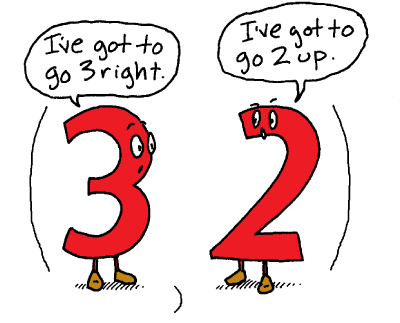Yellow
Green
Blue
Red
Magenta
Remove
The letters x and y are used to identify the axes of the Cartesian coordinates. On this map, the x-axis corresponds to east/west and the y-axis to north/south.
- What is the point of origin on the map? In other words, what are the coordinates of the point where the horizontal and vertical axes meet?
- What do the arrows at the end of the lines mean?
(1, 5) is an example of a location using the Cartesian coordinate system. The 1 tells you to move 1 space to the right (east). The 5 then tells you to move up 5 spaces (north).
- What island is at location (1, 5) on the map?
Coordinates are always given by saying the x-coordinate first, then the y-coordinate. For the point (1, 5), the 1 is the x-coordinate and the 5 is the y-coordinate. (1, 5) is also called an ordered pair.
- What are the coordinates for Long Island?
- What is located near (2, 3)?
- What is located at (0, 0)?
- What are the coordinates for Brampton Island?
- What is located near (7, 4)?
- Find Rockhampton, Australia, on the map. Describe the location of Rockhampton.
- Find Mackay on the map. Mackay is a city on the eastern coast of Australia. Rockhampton is another city on the coast of Australia. How would you describe its location to someone?

We can expand our coordinate system to include Rockhampton by extending the x- and y-axes in both directions from (0, 0). By using negative as well as positive numbers, any point can be named in relation to the origin.
The first coordinate of an ordered pair tells us how much to move horizontally (right or left) starting at the origin. The second coordinate tells us how to move vertically (up or down).








 Wherefore Art Thou, Romeo
Wherefore Art Thou, Romeo


